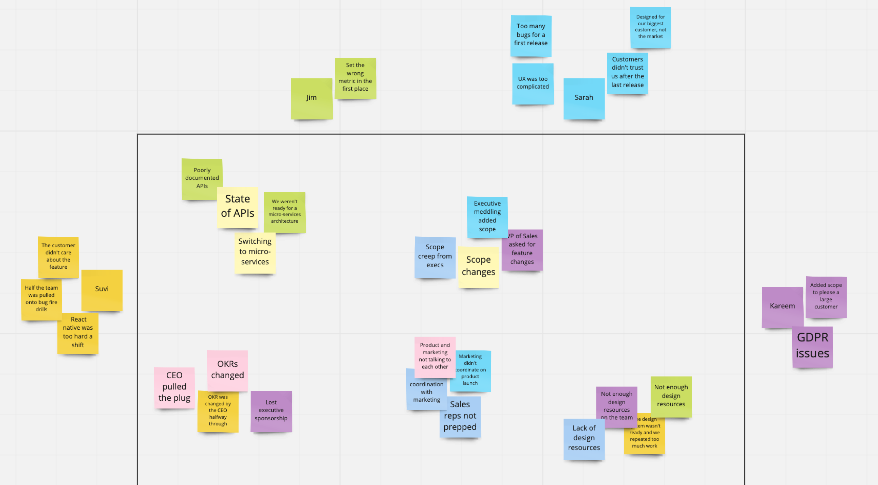Whenever a team is heading into a high-stakes project of any kind, I recommend they run a 1-hour pre-mortem. This brainstorming exercise stretches the team to identify possible failure points. Once you’ve spotted items, you can then decide which ones deserve mitigating strategies. It creates a safe space to talk about concerns without fear of appearing overly negative or critical of others.
Here’s a way to run the meeting with a geographically distributed team:
Before the meeting
Create the brainstorming board. This can be as simply as a shared Google Sheets doc, but if you have a Mural or Miro account, I like using visual sticky notes. Put a big, blank box in the middle. Around the periphery, spread out sticky notes with the participants’ names. It doesn’t really matter if you go with different colors or all the same color.
Decide who should attend. I would recommend getting as much cross-functional representation as possible. However, avoid having someone in the room who might stifle honest, speculative concerns (sometimes the presence of certain senior executives can have that effect).
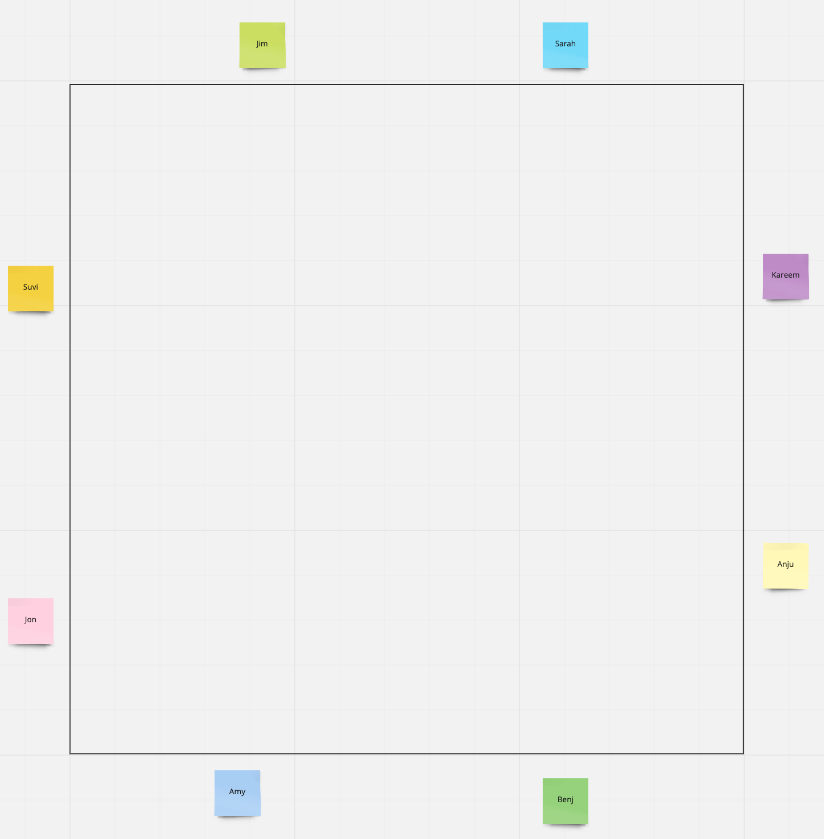
Invite participants. In your email, set the context. For example:
Team, we are running a group pre-mortem to identify and get ahead of possible risks in hitting our goal. Before the meeting, please carve out some quiet time to think: imagine that it is [June 30] and we’ve MISSED our goal to [hit a metric, ship a feature, etc]. Why did this happen? Please think about all the things that could possibly go wrong. Don’t limit yourself to your area of expertise. This will be a safe space to call out speculative concerns.
Here are a few examples to get you thinking: team trust broke down; executive interference changed goals or scope midway; bug fixing ate us alive; technology choice X proved too complex and slow; we didn’t do enough research about assumption Y; failed to coordinate the public release; etc etc
At the meeting – first 40 min
- Repeat the context and purpose of the meeting.
- Get everyone into the board and tell them to find their name.
- Set a timer for 5 minutes. Explain that they will add a sticky note for every idea they have about what went wrong — one idea per sticky. They should keep their notes located around their name for now, and keep them all the same size.
- If you suspect you need to remind attendees not to call out others by name, but rather to focus their sticky notes on the issues, now is the time.
- Get them going and watch the pace of sticky creation. When it slows, or at 5 minutes, ask if people need another minute. Otherwise move forward.
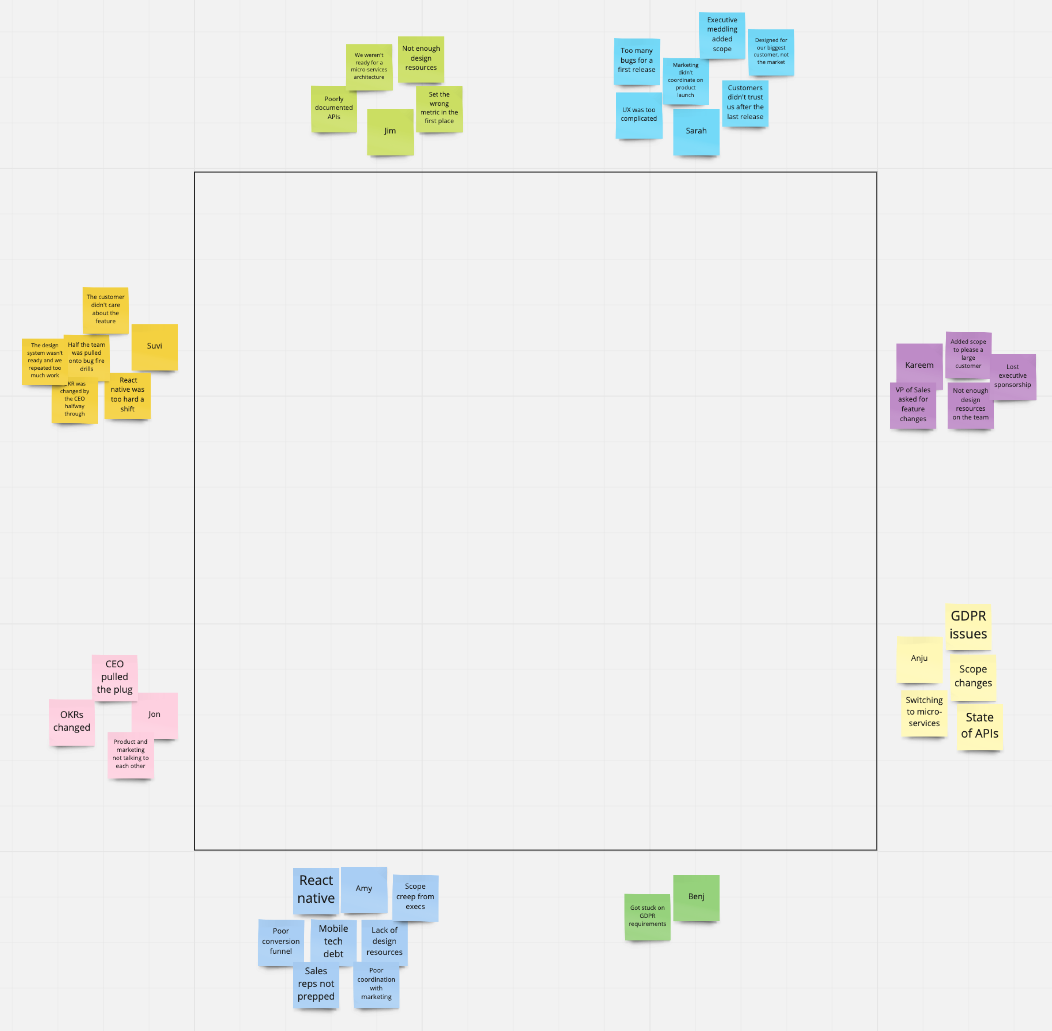
- Go around the board, starting with whomever you choose to start with.
- Ask them to move one sticky into the box that they are really worried about, i.e. both quite possible and high impact. Ask them to concisely explain their sticky.
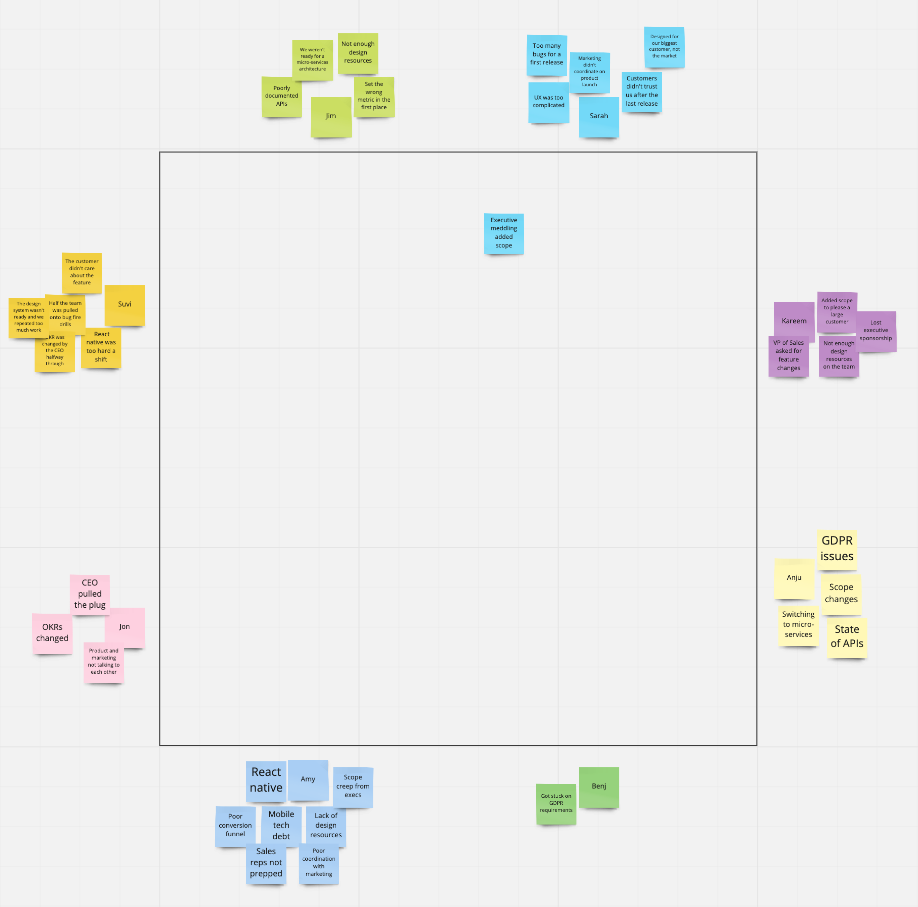
- Invite everyone else to cluster their similar stickies (the same worry) around the note just moved into the box.
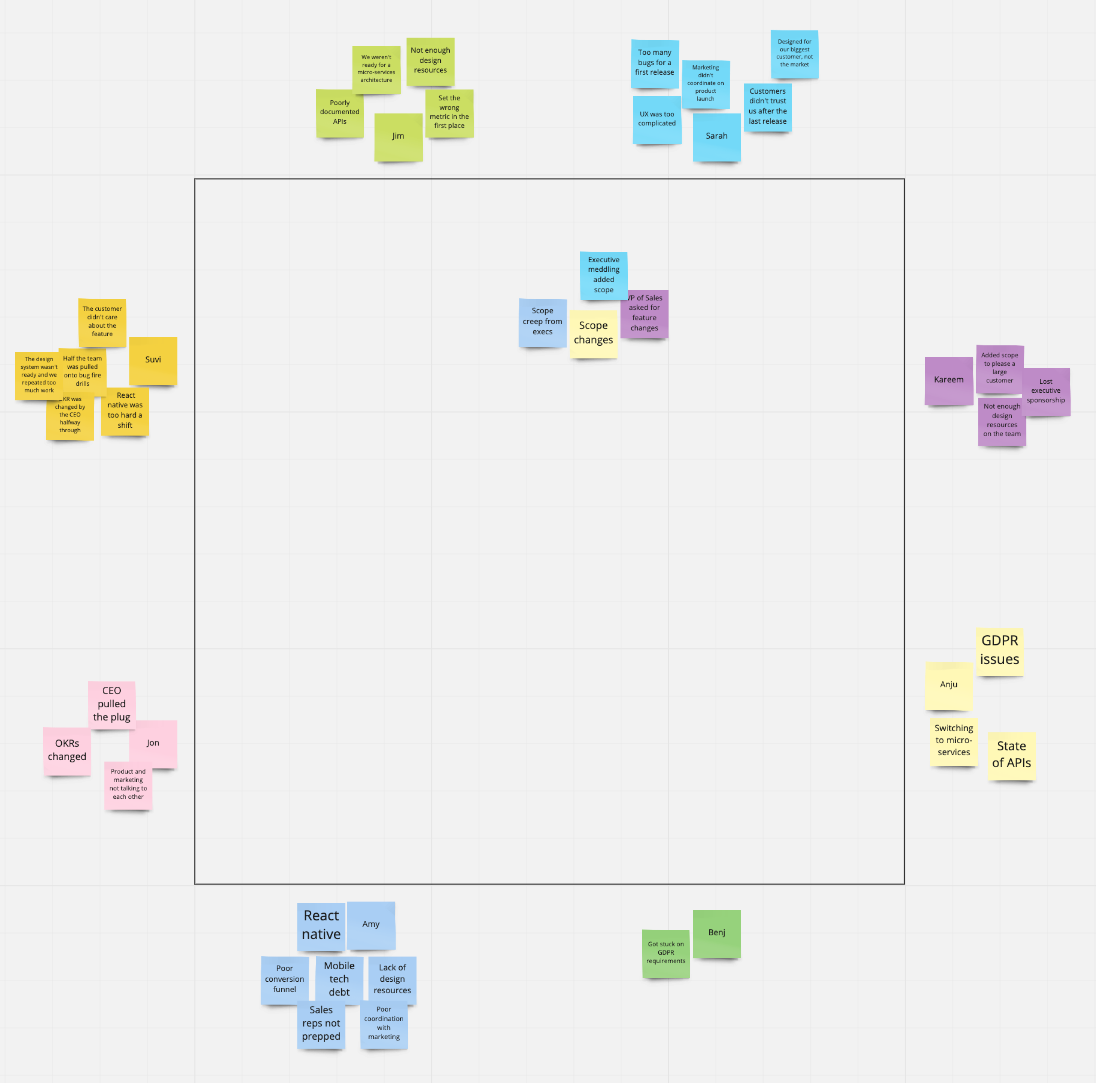
- DO NOT discuss the cards deeply.
DO NOT discuss how to solve the risk. - You might need to actively moderate the meeting to prevent “solutioning”, but keep things moving so you can keep this to an hour.
- Move on to the next person. Again, ask them to pick one sticky note and move it into the box with a concise explanation. Have the others move their similar stickies (if any) to be next to that note.
- Do this for at most 30 minutes. You might only have time for 2, maybe 3 rounds, depending on the size of the meeting.
At the meeting – last 10-15 minutes
Your risks will now be in clusters.
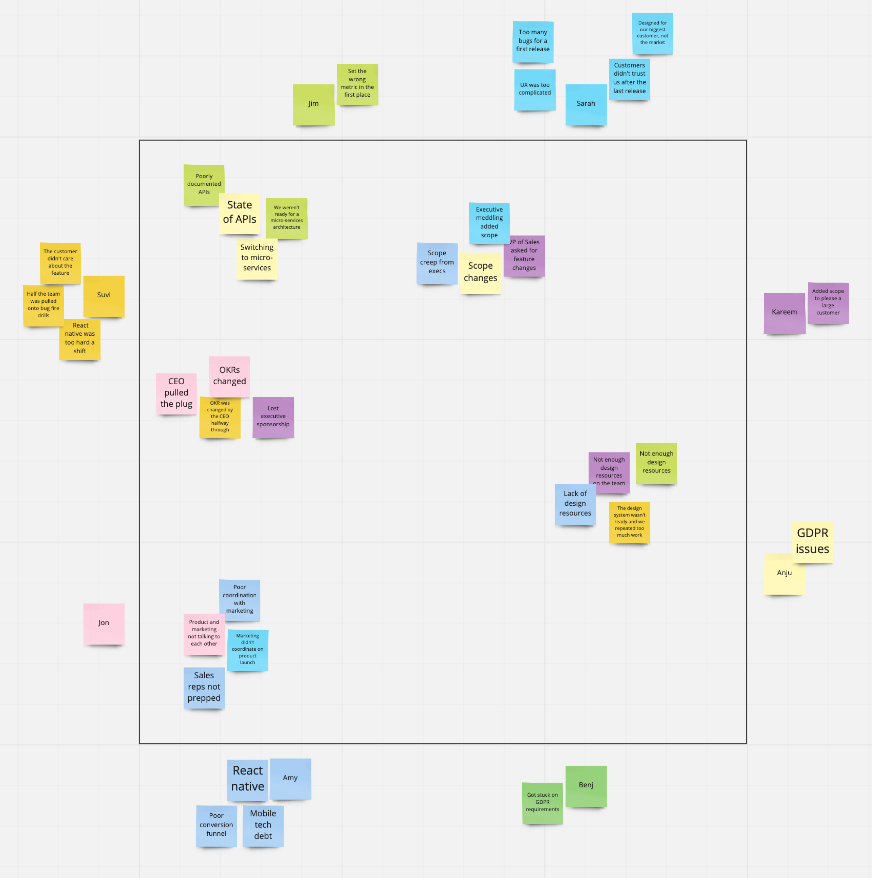
Start going through the ones that feel like they deserve a mitigating strategy. Pick a representative sticky note in that cluster to call out. Assign a point person who will own developing a mitigation strategy (or the conclusion that the risk is not worth mitigation) and sharing it back to the group within X days (say a week). The point person can of course get help from others, but you should have only one point person per major risk.
If too many things get assigned to one person, then rebalance the load.
Explain that there will either be a follow-up meeting and/or a shared document to review the mitigating strategies.
Remember, don’t discuss the cards deeply, and don’t get lost discussing possible solutions. People will want to, but that’s better done offline. If you finish up the meeting early, all the better. Let people get back to work!
After the meeting
Once the meeting is over, give the board a final review to check for any ideas not moved into the box or discussed, just to check for anything important that didn’t get covered. If you find something, assign a point person and include it for the follow-up meeting/document.
Follow up with an email re-stating the risks, assigned point people, and deadline for the follow-up meeting or document.
Make sure the follow-up actually happens!
For a longer-term project, it can be worth running these every 2 or 3 months, not just at the start.
